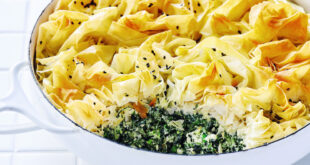How would you feel if you were handed over $640 a year – for doing nothing more than turning your stale bread into crumbs and your tired vegetable ends into soup? OK, we’re simplifying things a little, but the fact is, the average Kiwi family throws out the equivalent of 3 shopping trolleys (almost 90kgs) of food each year. Do the maths, and it comes to over 156,000 tonnes of food.
Before you gasp – there’s more equally astonishing news. Although most food in New Zealand is wasted in homes, a whole lot more is jettisoned into landfills from other sources such as market gardens, supermarkets, restaurants, aged care facilities … the list goes on.
Food from these other sources gets wasted for many reasons – and more often than not, it isn’t because the food is inedible. Factories send processed foods (such as canned goods) to landfill simply because there may be a printing error on a label, or because an overseas buyer signals they are not able to accept an order (after all, it’s not that easy to sell Kiwis canned tomatoes when the labels on the cans are written in Korean). Fruit ends up in landfill because it’s not the right size or shape for the export market, or because a glut means the price paid for it doesn’t warrant the freight to get it to a retailer. But whatever the reason behind food waste, the truth is, of all the food produced in the world, only one third of it is consumed.
If you’re still following along here, hold tight to your seat, because this is where the facts get very ugly. You see, when food meets landfill, it’s not the same thing as food hitting our carefully constructed compost pile. At a landfill, machinery covers food in soil and other rubbish to reduce odour. When food waste is denied oxygen, it breaks down to produce a gas called methane. And methane is seriously worrying. In terms of contributing to climate change, it’s 80 times more damaging than Co2 (the climate change gas we hear about most).
We could go on delivering ever more dispiriting statistics, but we think it’s time for some seriously good news! Kiwis are resourceful, and are renowned for solving several problems at once in amazing DIY ways. So it’s no wonder groups around the country are tackling food waste, climate change, and poverty in one hit. Among them, a Hastings based organisation called ‘Nourished for Nil’ is currently keeping 1,173,046kgs of food from going to waste each year. What’s more, they’re redistributing perfectly edible food back to its local population.
The food is collected mainly from factories, primary producers, and supermarkets, who are also keen not to see food wasted. These businesses contact Nourished for Nil staff who have vans, trucks, freezers and storage facilities which can accept the food prior to it being bagged up by volunteers, and passed on through 4 local depots.
Here’s the thing about Nourished for Nil you have to love most of all, while food banks and other charitable organisations usually require some sort of referral from a social service before ‘clients’ can request food, Nourished for Nil is there for everyone. No questions are asked (unless they’re questions that will help prevent even more food waste – after all, if you’re homeless, then frozen food isn’t going to be a lot of good to you). Anyone can come to collect food from Nourished for Nil because there’s so much of it and because if it isn’t accepted – it goes to land fill to become the dreaded methane our world just doesn’t need.
If it all sounds too easy, we’re sure it’s not. On the other hand, if you’re inspired to volunteer for a similar organisation in your own part of the country, phone your local council to ask what’s out there.










Join the Discussion
Type out your comment here:
You must be logged in to post a comment.